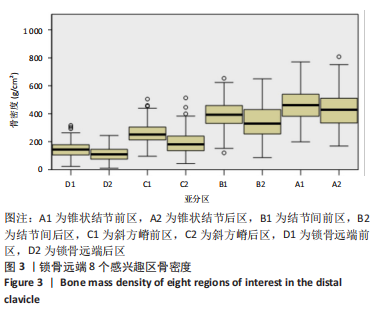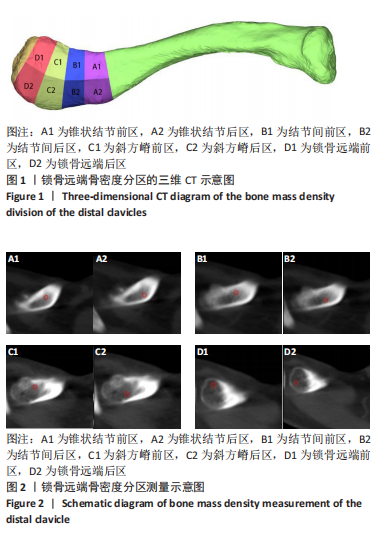[1] IBRAHIM A, GAMEEL S, ABDELGHAFAR K, et al. Rehabilitation Posture Does Not Affect the Outcome of Arthroscopically Treated Acromioclavicular Dislocation. Arthroscopy. 2020;36(10):2635-2641.
[2] ULUCAY C, OZLER T, AKMAN B, et al. Treatment of Acromioclavicular Joint Injuries in Athletes and in Young Active Patients. J Trauma Treat. 2016;5:344.
[3] 吴俊国,杨琴文,李凌峰,等.增加缝线孔的锁骨钩钛板与传统钩钛板治疗急性肩锁关节脱位的比较研究[J] .中华骨科杂志,2022,42(6):357-364.
[4] 杨琨,费晨,王鹏飞,等.自体或同种异体肌腱重建喙锁韧带与锁骨钩钛板治疗肩锁关节脱位效果的Meta分析[J].中国组织工程研究,2021, 25(28):4580-4586.
[5] 吴程,夏亚卿,王建吉,等.关节镜下TightRope固定与锁骨钩钛板固定治疗NeerⅡ型锁骨远端骨折的比较[J].中国组织工程研究,2019,23(32): 5117-5125.
[6] 王古衡,李双,陈亚兰,等.同种异体肌腱重建韧带技术与Endobutton技术治疗肩锁关节脱位的疗效比较[J].中华手外科杂志,2020,36(2):99-102.
[7] 徐希斌,何双建,王磊,等.双束纽扣带袢钛板治疗肩锁关节脱位的疗效分析[J].实用手外科杂志,2022,36(1):23-25.
[8] 齐波,阮默,陈太禄,等.TightRope带袢钛板系统治疗肩锁关节脱位的疗效[J].临床骨科杂志,2020,23(1):44-46.
[9] CHEN K, XU B, LAO YJ, et al. Risk factors related to the loss of reduction after acromioclavicular joint dislocation treated with the EndoButton device. Ann Transl Med. 2021;9(4):345.
[10] L’INSALATA JC, KLATT B, FU FH, et al. Tunnel expansion following anterior cruciate ligament reconstruction: a comparison of hamstring and patellar tendon autografts. Knee Surg Sports Traumatol Arthrosc. 1997;5(4): 234-238.
[11] HÖHER J, MÖLLER HD, FU FH. Bone tunnel enlargement after anterior cruciate ligament reconstruction: fact or fiction? Knee Surg Sports Traumatol Arthrosc. 1998;6(4):231-240.
[12] VOSS A, SINGH H, DYRNA F, et al. Biomechanical Analysis of Intra-articular Pressure After Coracoclavicular Reconstruction. Am J Sports Med. 2017; 45(1):150-156.
[13] CHEN RE, SOIN SP, EL-SHAAR R, et al. What Regions of the Distal Clavicle Have the Greatest Bone Mineral Density and Cortical Thickness? A Cadaveric Study. Clin Orthop Relat Res. 2019;477(12):2726-2732.
[14] 房燚,赵文志,潘德悦,等.肩锁关节脱位研究:如何达到解剖复位和持续性稳定及关节微动[J].中国组织工程研究,2020,24(5):796-802.
[15] LI H, WANG C, WANG J, et al. Restoration of horizontal stability in complete acromioclavicular joint separations: surgical technique and preliminary results. Eur J Med Res. 2013;18(1):42.
[16] COPELAND S, KESSEL L. Disruption of the acromioclavicular joint: surgical anatomy and biological reconstruction. Injury. 1980;11(3):208-214.
[17] LONGO UG, CIUFFREDA M, RIZZELLO G, et al. Surgical versus conservative management of Type III acromioclavicular dislocation: a systematic review. Br Med Bull. 2017;122(1):31-49.
[18] ZHANG L, XIONG L, ZHOU X, et al. Computed Tomography-Based Determination of the Optimal Locations of Bone Tunnels for Coracoclavicular Ligament Reconstruction. Orthop Surg. 2022;14(10):2692-2700.
[19] STRUHL S, WOLFSON TS. Continuous Loop Double Endobutton Reconstruction for Acromioclavicular Joint Dislocation. Am J Sports Med. 2015;43(10):2437-2444.
[20] LI Q, HSUEH PL, CHEN YF. Coracoclavicular ligament reconstruction: a systematic review and a biomechanical study of a triple endobutton technique. Medicine (Baltimore). 2014;93(28):e193.
[21] WALZ L, SALZMANN GM, FABBRO T, et al. The anatomic reconstruction of acromioclavicular joint dislocations using 2 TightRope devices: a biomechanical study. Am J Sports Med. 2008;36(12):2398-2406.
[22] LU D, WANG T, CHEN H, et al. A comparison of double Endobutton and triple Endobutton techniques for acute acromioclavicular joint dislocation. Orthop Traumatol Surg Res. 2016;102(7):891-895.
[23] 宋哲,张堃,朱养均,等.应用Endobutton带袢钛板技术治疗Rockwood Ⅲ型肩锁关节脱位[J].中华肩肘外科电子杂志,2015,3(1):18-23.
[24] JEON N, CHOI NH, HA JH, et al. Clavicular Tunnel Complications after Coracoclavicular Reconstruction in Acute Acromioclavicular Dislocation: Coracoid Loop versus Coracoid Tunnel Fixation. Clin Orthop Surg. 2022; 14(1):128-135.
[25] BERTHOLD DP, MUENCH LN, DYRNA F, et al. Radiographic alterations in clavicular bone tunnel width following anatomic coracoclavicular ligament reconstruction (ACCR) for chronic acromioclavicular joint injuries. Knee Surg Sports Traumatol Arthrosc. 2021;29(7):2046-2054.
[26] 李凯,陈捷,赵林芬,等.中国人群定量CT(QCT)脊柱骨密度正常参考值的建立和骨质疏松症QCT诊断标准的验证[J].中国骨质疏松杂志, 2019,25(9):1257-1262+1272.
[27] ENGELKE K, ADAMS JE, ARMBRECHT G, et al. Clinical use of quantitative computed tomography and peripheral quantitative computed tomography in the management of osteoporosis in adults: the 2007 ISCD Official Positions. J Clin Densitom. 2008;11(1):123-162.
[28] LINK TM, LANG TF. Axial QCT: clinical applications and new developments. J Clin Densitom. 2014;17(4):438-448.
[29] KOCADAL O, YÜKSEL K, GÜVEN M. Evaluation of the clavicular tunnel placement on coracoclavicular ligament reconstruction for acromioclavicular dislocations: a finite element analysis. Int Orthop. 2018;42(8):1891-1896.
[30] 章异,赵佳,罗倩,等.能谱CT在急性肩锁关节脱位患者喙锁韧带损伤诊断中的意义[J].中国骨与关节杂志,2022,11(10):738-744.
[31] MINKUS M, WIENERS G, MAZIAK N, et al. The ligamentous injury pattern in acute acromioclavicular dislocations and its impact on clinical and radiographic parameters. J Shoulder Elbow Surg. 2021;30(4):795-805. |



